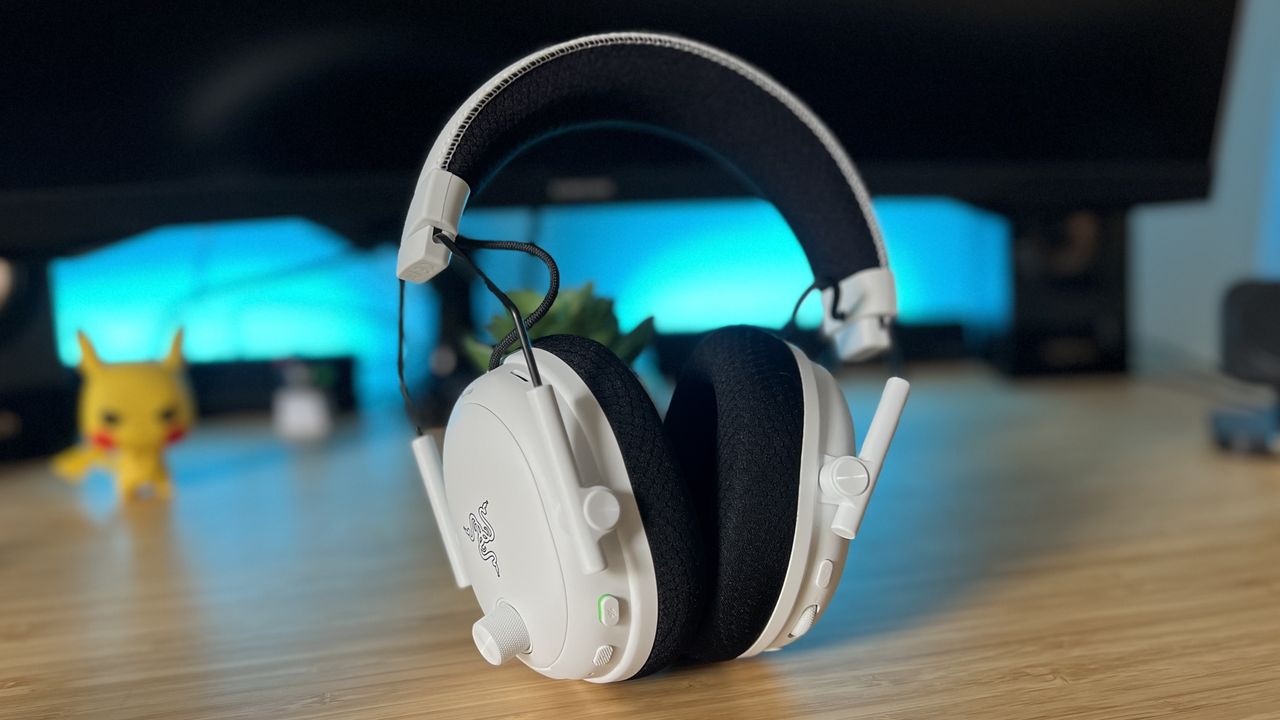
The BlackShark line has been basking in sunlight for the last few years, offering up some of the best audio and microphone quality I've tested so far. Now it's time for a new generation, and the Razer BlackShark V3 Pro serves its ancestors well.
This is a phenomenal sounding headset, with an incredibly wide range of sound and excellent power in the low end. Couple that with a comfortable, durable design, a plethora of handy additional features, and easy movement between platforms and this is one of the best gaming headsets on the market right now.
All that, and it's not the most expensive set of cups I've had on my desk in the last few years. Don't get me wrong, that $249.99 / £249.99 price tag is still commanding, but when you consider the likes of the SteelSeries Arctis Nova Pro Wireless and Logitech Astro A50 X sit between $350 and $400 at MSRP, things are swinging in Razer's direction.
Price |
$249.99 / £249.99 |
Connection |
2.4GHz / Bluetooth / Wired (USB and 3.5mm) |
Drivers |
Razer TriForce Bio-Cellulose 50mm Gen 2 |
Frequency response |
12Hz - 28kHz |
Microphone |
Full-band omnidirectional |
ANC |
Yes |
Controls |
Mic mute, power, volume, SmartSwitch, customizable roller, ANC |
Battery |
Up to 70 hours (PC), up to 48 hours (console) |
Weight |
367g |
Compatibility |
PC, PS5, Xbox (variant), mobile, Nintendo Switch |
Design
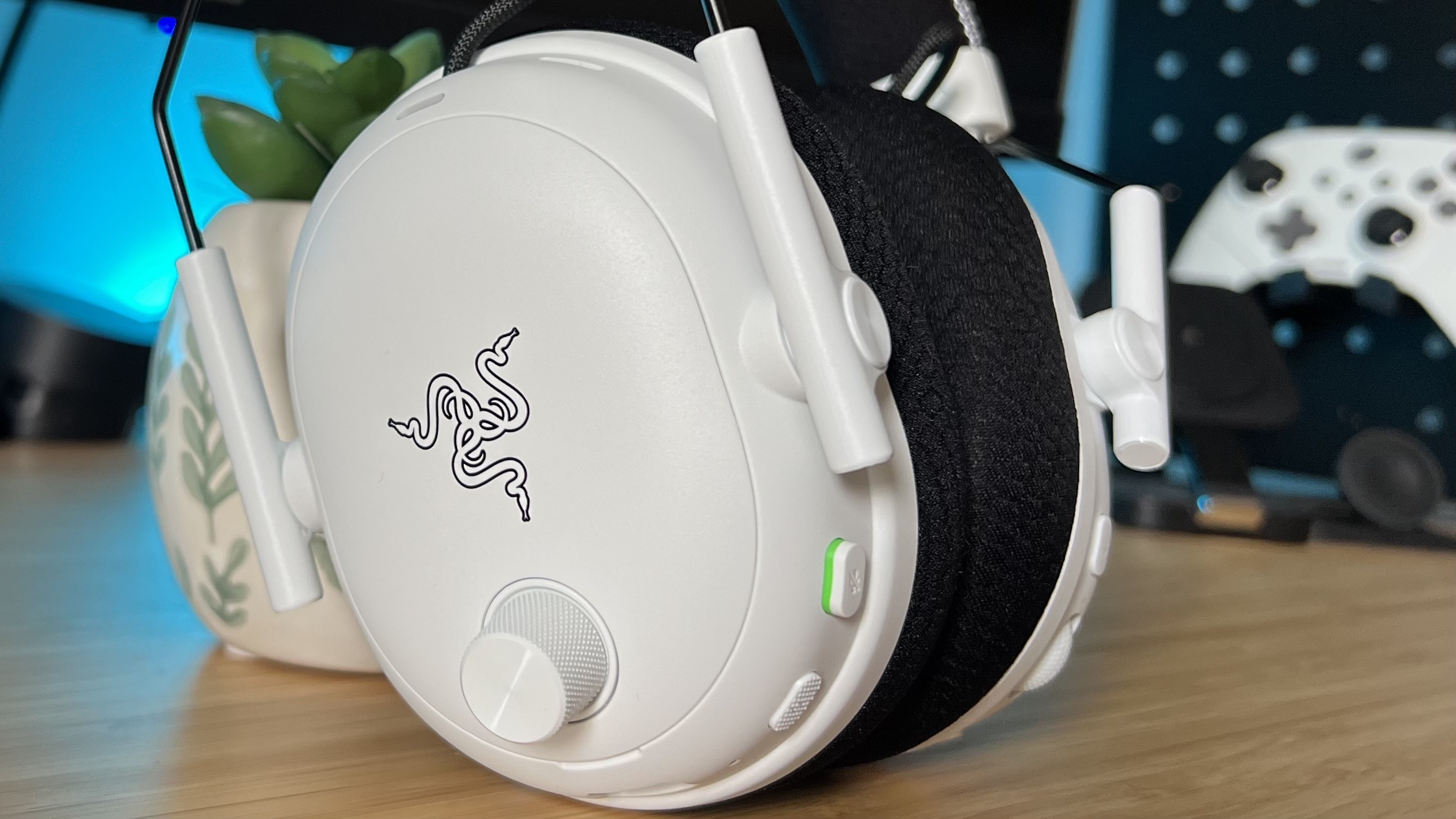
Razer hasn't ripped up its design rulebook here. This is still the same helicopter-style gaming headset we've all come to recognize over the years. It's one of the brand's more distinctive designs, and holds up well with plenty of adjustment in the cups and sturdy yokes on each side.
Would I have preferred an all-white aesthetic rather than the dual-tone white and black? Possibly, but this is still a striking colorway that helps the BlackShark V3 Pro stand apart from more monotone accessories.
From looks alone you could be forgiven for mistaking the V3 Pro for its older counterpart, the Razer BlackShark V2 Pro or even the Razer BlackShark V2 Hyperspeed - that's until you inspect a little closer. The cushions themselves are the highlight of this design. Razer's offering the best of both worlds this time around, with a leatherette base that seals sound away and a mesh topper that keeps things sweat-free and comfortable.
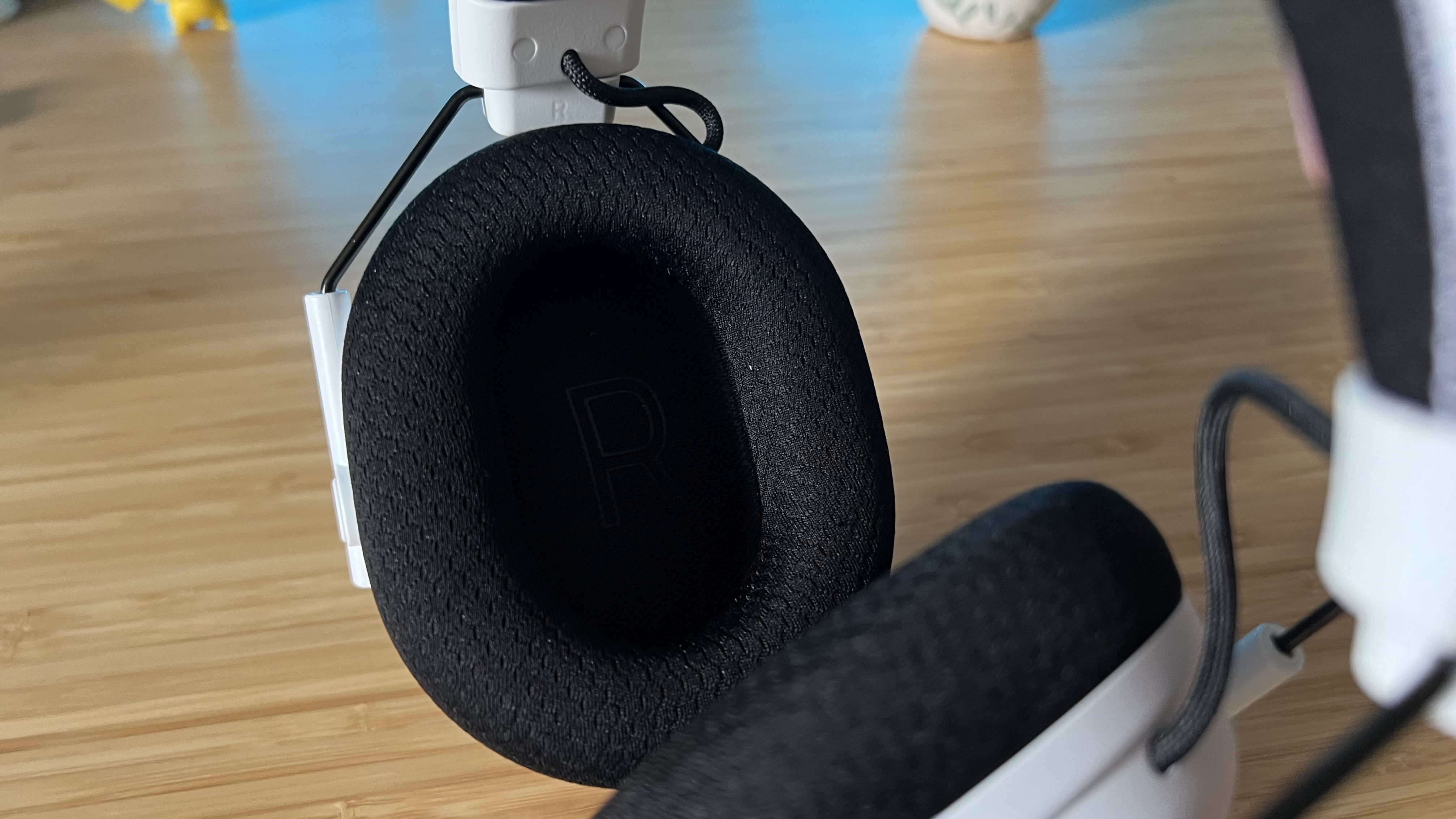
The result is a fully encapsulated cup with fantastic sound isolation, but still the softer feel of a material finish. That's with oval shaped cups that naturally grip around the ears rather than sitting awkwardly on top of them, and a clamp force that doesn't feel too overbearing.
The headband up top could have a little more padding to truly complete the effect, as it stands it cuts just a little too much into the crown. That sensation fades into the distance pretty quickly, though.
The sides also feature swappable magnetic plates, though at this stage there aren't any additional designs available so it feels little redundant at launch.
The cups themselves are coated with a premium-feeling matte finish, with the headband keeping that luxury up across its leatherette material and embossed Razer logo. All of that weighs in at 367g, a fairly hefty wireless gaming headset if you're used to cheaper alternatives.
That weight is well-balanced, though, with a stronger clamp force allowing less of it to sit directly on the crown. I did notice temperatures starting to climb inside the cups, which strained my tolerance for that heavier feel just a little. If you already know you hate the feel of a chunkier headset, this isn't the device for you. The cheaper Razer BlackShark V3 and V3 X models are lighter at 270g.
Features
There are a whole host of new features gracing the Razer BlackShark V3 Pro's spec sheet, from active noise cancellation to simultaneous Bluetooth and 2.4GHz audio. These are both features I generally only find on the most expensive headsets on the market, so their inclusion even in a $250 device is still impressive.
The former is toggled via a dedicated control on the right cup, offering the option to switch between full ANC, no ANC, and an Ambient sound setting. The latter allows for one of my favorite setups, throwing some tunes on my phone and heading into the world of Fallout 76.
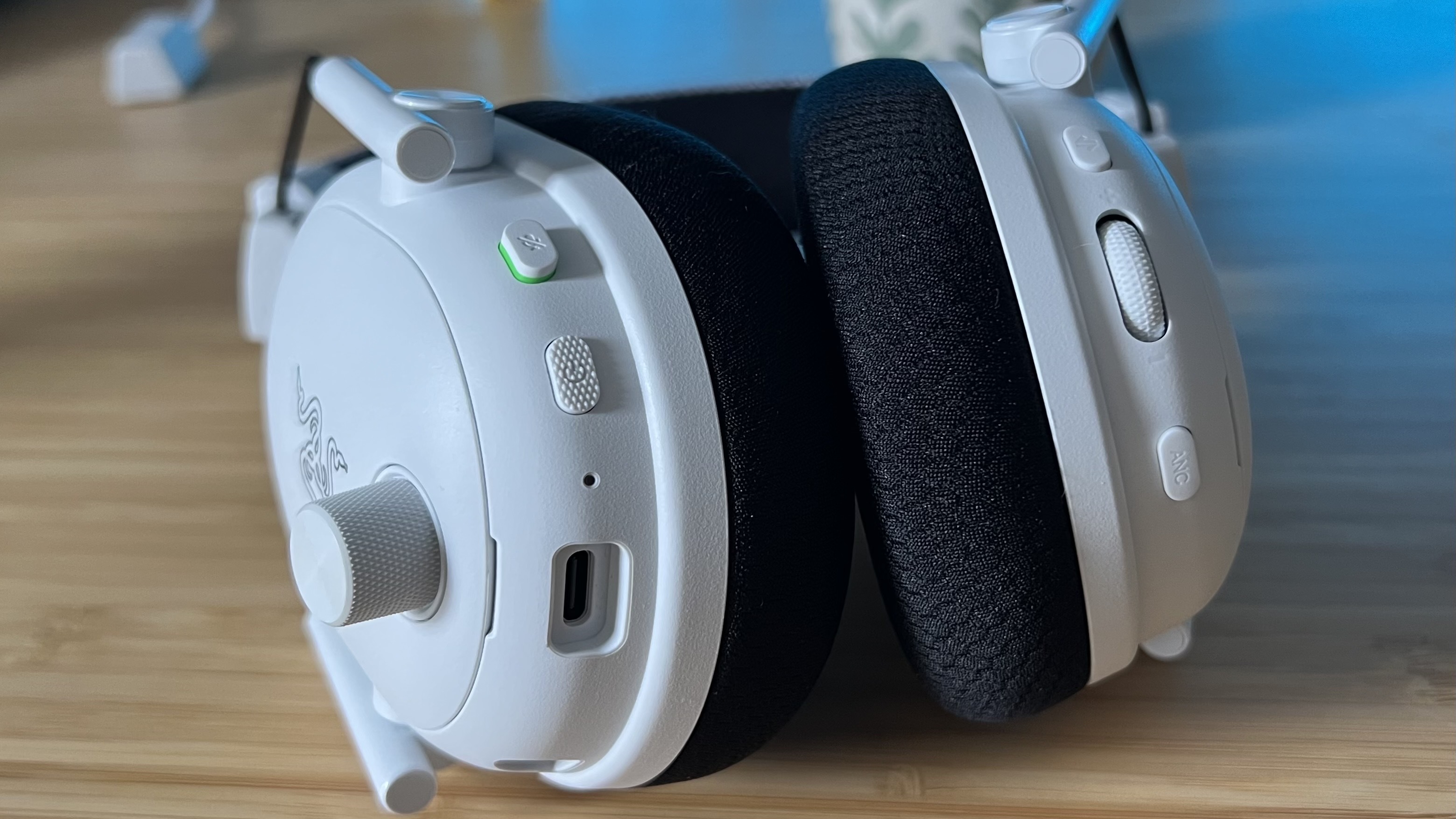
Being able to run both audio connections at the same time is a godsend for those grindier games, but also means you'll be able to pick up the phone quickly without having to lose your game audio. I never noticed any degradation in audio quality when using this feature either.
I usually run my gaming headsets off 2.4GHz connections alone, and Razer's HyperSpeed Wireless Gen 2 has you covered for a super speedy tether as well. The 10ms latency keeps things incredibly tight, even if the actual receiver requires a whole additional USB-C cable. That's one of my pet peeves with this line.
I love a versatile headset - being able to pop out a 2.4GHz receiver and throw it in a gaming tablet or Nintendo Switch goes a long way in justifying a higher price tag. Sure, you've got Bluetooth for those moments, but this isn't the best option for those after a high-speed portable setup. It's also worth noting if you're after a dedicated PS5 headset or Xbox Series X headset - you'll need to add a whole extra cable.
The detachable microphone remains one of the best in the market, taking the super wideband design of the previous generation and expanding it to a full band 48kHz sampling rate. It makes for extremely rich, textured vocals, making voices on even more expensive headsets sound slightly flattened by comparison.
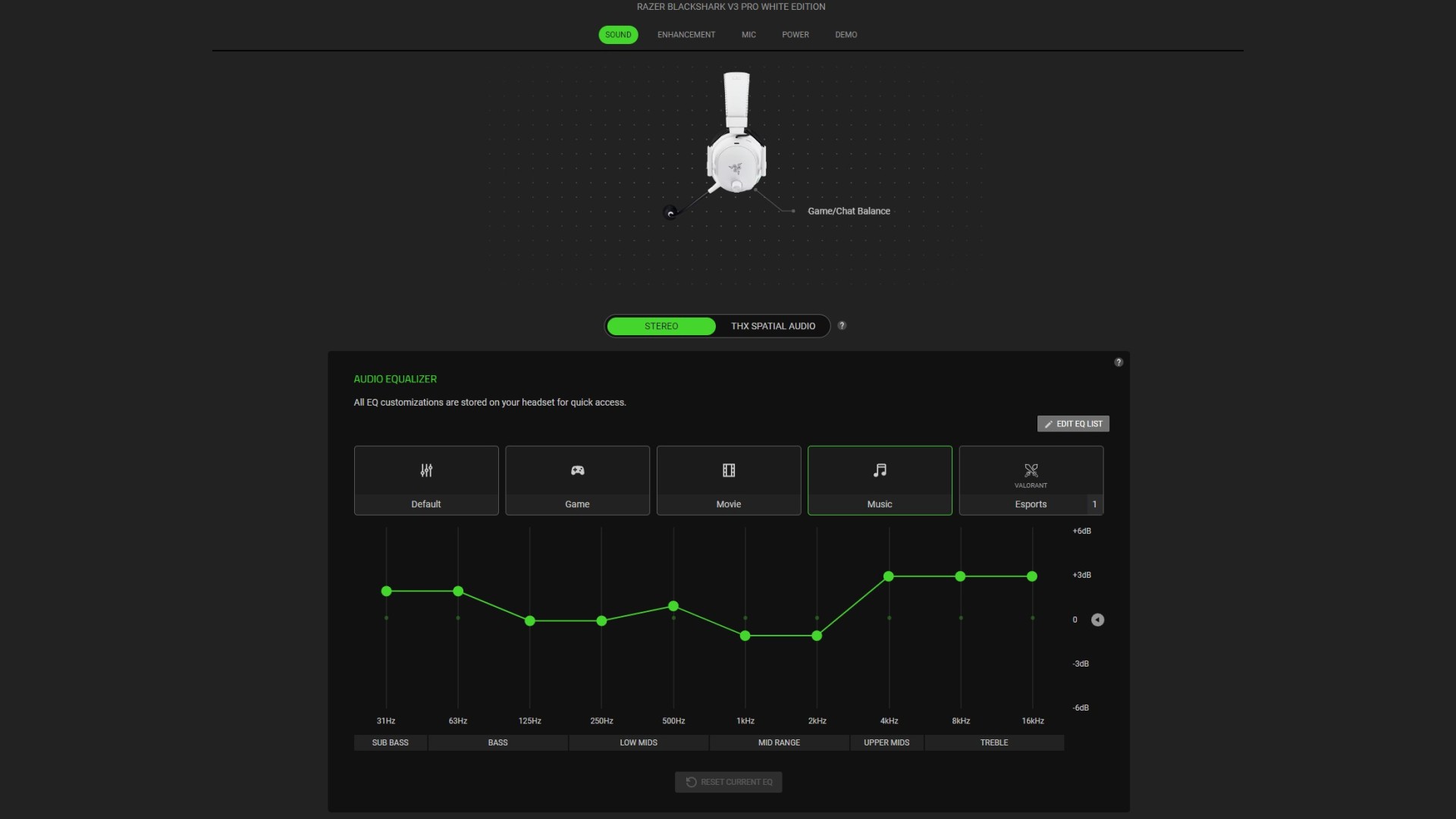
Razer Synapse 4 is still calling the shots here, with a full audio EQ graph to tinker with, four presets already set up, and space for up to 9 profiles saved directly to the headset itself. That last bit is important - it means you can easily take your audio settings across from PC to console. Not only that, but the Razer BlackShark V3 Pro can also be set up with the Razer Audio App for quicker adjustments on the go as well.
Synapse also allows you go to personalize your ANC experience with four different strength levels, toggle THX Spatial Audio, and set specific behaviors when combining 2.4GHz and Bluetooth sources. Everything is clearly laid out and instantly reflected on the headset, so no forgetting to save your settings.
Performance
I knew I was going to like the sound profile of the Razer BlackShark V3 Pro as soon as I put it on. I was testing the headset before actually getting my hands on my own one, at a dedicated event. Marvel Rivals danced across the screen in front of me, but I was sucked into the soundtrack. I was immediately enthralled by the amount of space in the low end, but the power that's put into those deeper details is even more impressive.
I was worried the experience wouldn't be as impactful in my own setup. Maybe there was a specific set of EQ settings active that offered up such impressive audio, or perhaps I was taken in by the particularly energetic OST. Nope. Hooked up to my own PC, with my own Spotify playlists running, the BlackShark sounds just as powerful as that first listen.
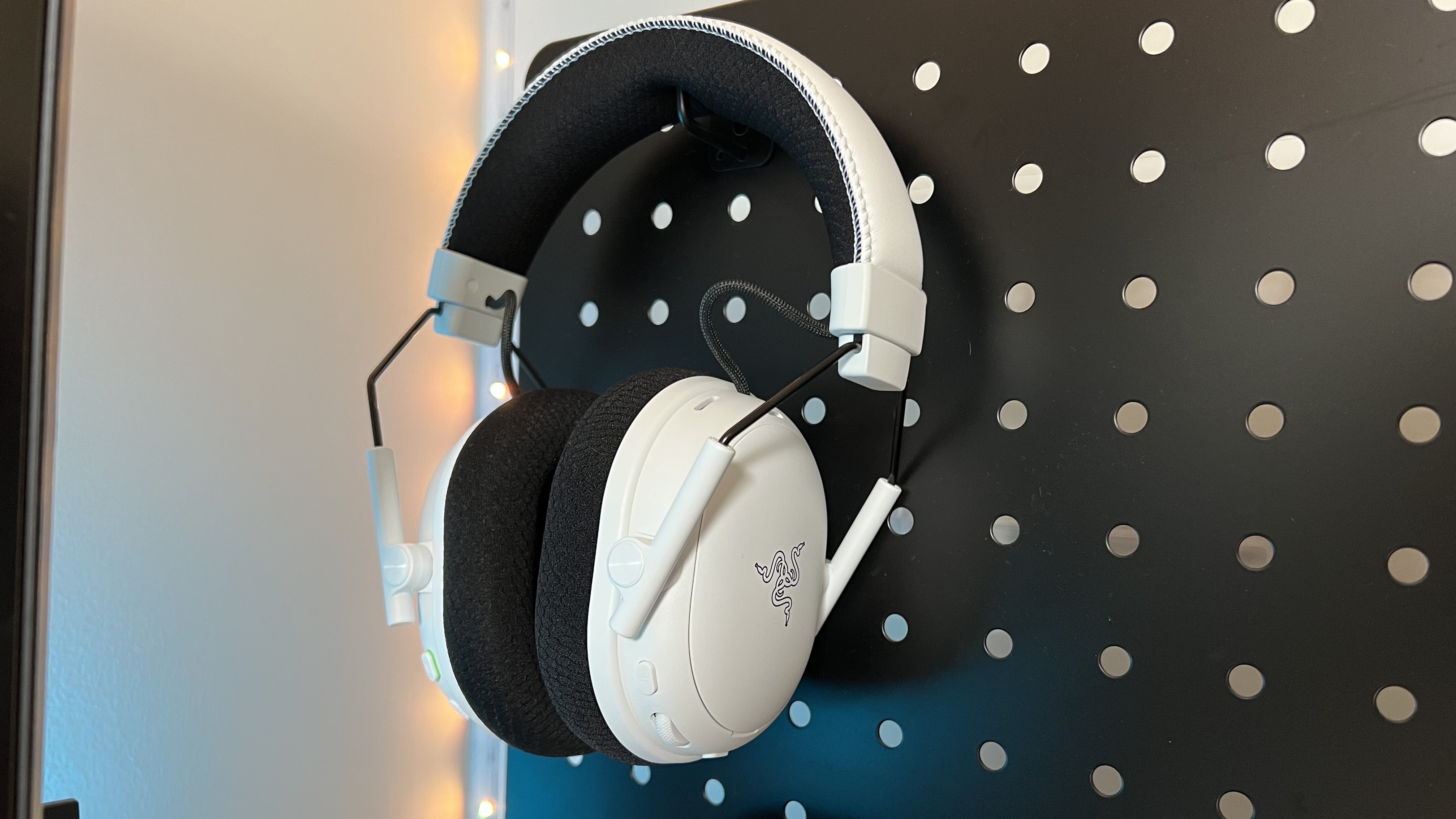
This is a gaming headset, though, and game we must. Doom: The Dark Ages was my first trial. Every ground slam crunches with an incredibly textured thud, with the drama of the soundtrack's guitars balancing beautifully against higher pitched gunshots and guttural demon roars.
Directional audio is particularly tight here, as well. I can hear every parried attack as it slings its way to my left or right, with even the crackling of flames and creaking of old wooden doors catching my attention throughout the arena.
Clair Obscur: Expedition 33 put those finer details to the test. As with most parry-heavy titles, it's a lot easier to rely on sound cues than visual ones to get through these boss battles.
The Razer BlackShark V3 Pro was fast, detailed, and lent these finer gameplay cues excellent volume, making bolder party combos a little less frantic and allowing for longer strings of defensive combos than I typically achieve. Of course, that's all without stating the obvious, the soundtrack sounded phenomenal through these cups as well.
Razer has used Bio-Cellulose drivers for its new generation Pro (the V3 and V3 X stick to more traditional material). That goes a long way in explaining the low end power, this thinner diaphragm resists distortion in the bass ranges thanks to its increased rigidity compared to the neodymium you'll find in most models.
It's also particularly well tuned for a robust mid-section as well, allowing for a sturdy separation between frequencies and a much clearer sound image overall.
Should you buy the Razer BlackShark V3 Pro?
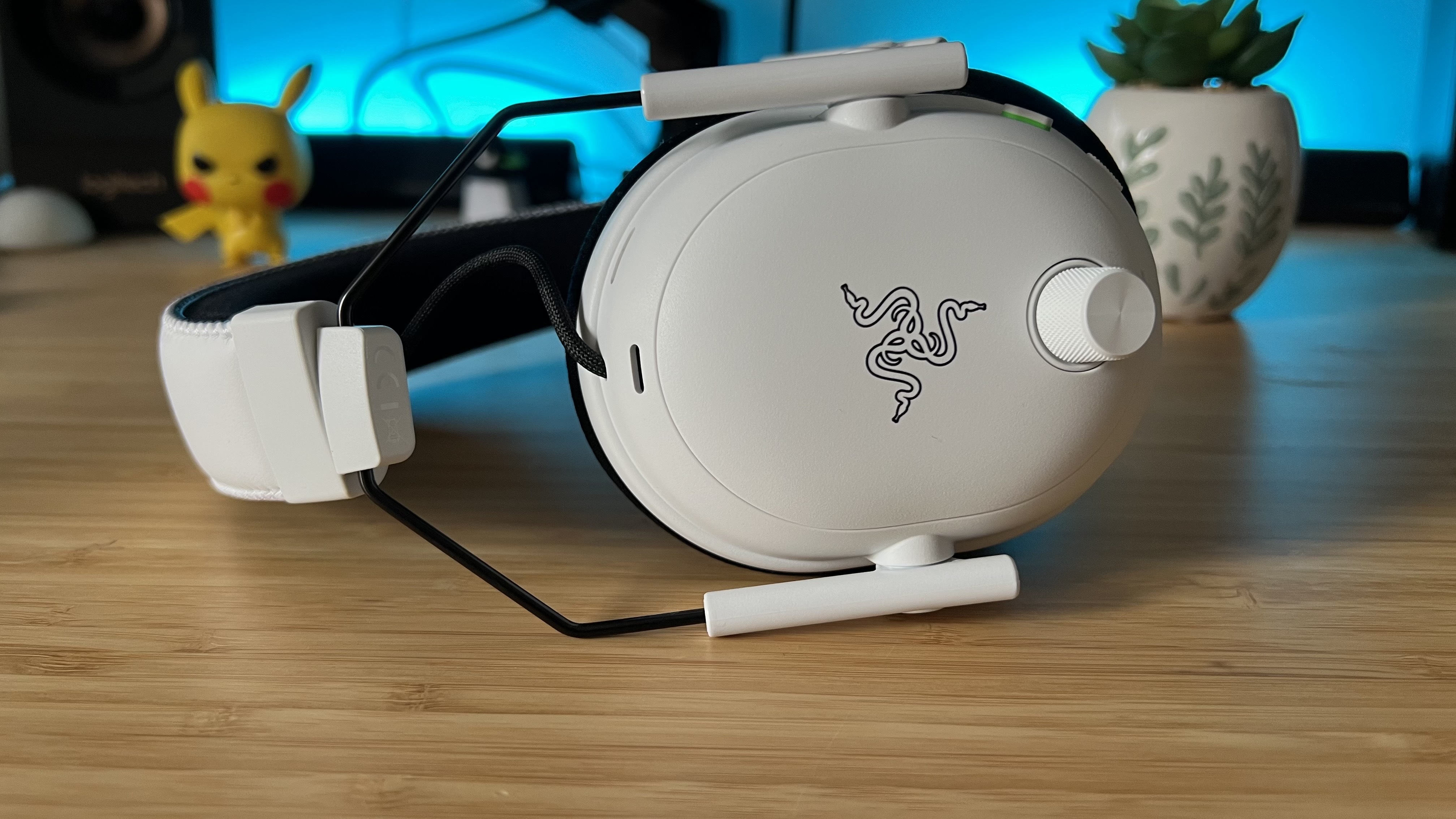
The Razer BlackShark V3 Pro sounds incredible, feels comfortable enough to get away with, and looks like previous generations. That's to say, it probably beats my go-to, the SteelSeries Arctis Nova Pro Wireless in the audio department (it's not quite as neutral, but it's got more going on in the lower ranges) but can't quite keep up in some of its special features.
Both headsets offer simultaneous Bluetooth and 2.4GHz as well as active noise cancellation. I find the latter is far more effective in Razer's iteration, but the BlackShark does drop one of my favorite SteelSeries features; hot-swappable batteries.
Considering you'll only get 70 hours of charge out of these cups when connected to a PC (and 48 hours on console) that could be a bigger sacrifice than you think.
The SteelSeries Arctis Nova Pro Wireless also makes arrangements for multi-platform setups. Its dedicated hub DAC allows for easy switching and EQ adjustments on the fly, while also keeping your batteries juiced up.
Ultimately, the Razer BlackShark V3 Pro is going to stay right next to my PC, even if the Arctis Nova Pro Wireless sits next to my PS5. The power of its audio can't be challenged in the market right now, and its Windows-specific THX Spatial features sound fantastic as well. If you're on the hunt for a PC-specific headset, this is where you need to be looking. For more casual console use, there are different feature sets out there that may suit you better.
How I tested the Razer BlackShark V3 Pro
I used the Razer BlackShark V3 Pro for all my gameplay across PC, PS5, and Nintendo Switch 2 over the course of two weeks. I primarily played across Doom: The Dark Ages, Clair Obscur: Expedition 33, Fallout 76, and The Legend of Zelda: Breath of the Wild during that time, while also dabbling in Apex Legends and Mario Kart World. For more information on how we test gaming headsets, check out the full GamesRadar+ Hardware Policy.
We're also hunting down all the best PC headsets and the best Nintendo Switch headsets on the market. Or, for something more portable, check out the best gaming earbuds available now.







